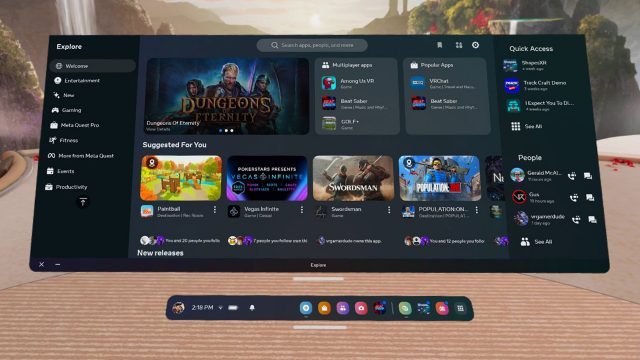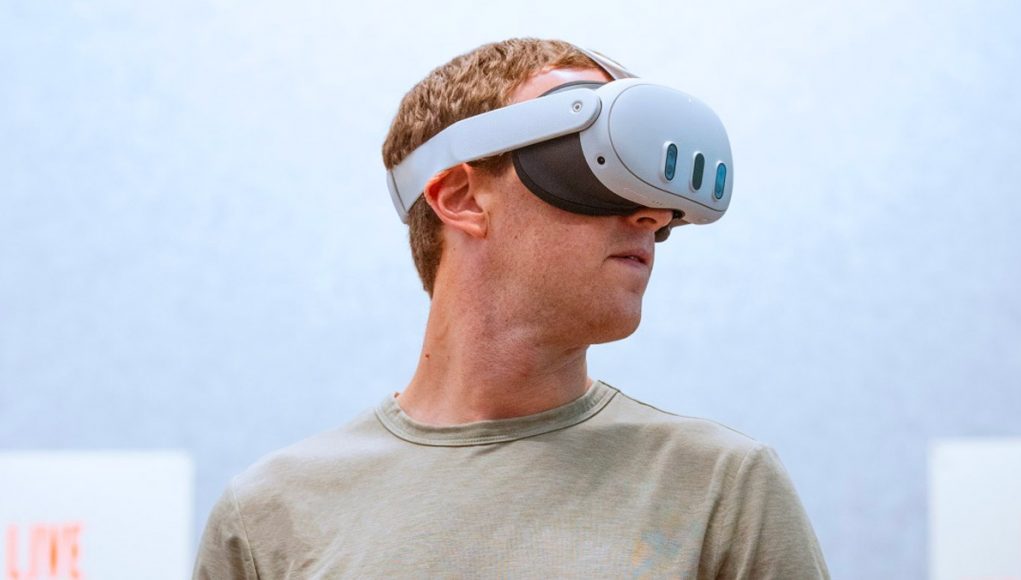What Wasn’t Announced
And then there was the stuff Meta didn’t talk about.
Content
If you’ve been following the conversation around Connect this year, a major theme is that folks were let down by a lack of major game updates and announcements. Neither of the two biggest games on the horizon, Assassin’s Creed Nexus VR and Asgard’s Wrath 2, will be ready in time for the launch of Quest 3. Players will need to wait until November 16th, and December 15th, respectively, to get their hands on those two anchor titles.
Meta showed off Assassin’s Creed during Connect, but impressions I’ve seen have been so-so up to this point and the hype seems rather muted for such a big franchise. I don’t think anyone can really tell at this point if the game will be a hit, a flop, or ‘just ok’.
And then there’s Grand Theft Auto: San Andreas VR, which Meta didn’t even mention at the conference. Considering the game was announced two years ago now—and it isn’t looking ready for the 2023 holiday season—people are starting to get worried that it might never arrive.
The biggest game news at Connect was the announcement of LEGO Bricktales, which is certainly a good IP to add to Meta’s store. But the game was revealed awkwardly on stage as part of a sizzle reel without much fanfare. As a result, I’ve seen minimal discussion about it surrounding the event. It’s also not launching until December.
All of that leaves Quest 3 without any immediate killer launch content. There will be plenty of fun games to explore for those who are brand new to VR with Quest 3, but for the most part players will be diving into content that was made with the three year old Quest 2 limitations in mind. Those that have already taken the plunge will be waiting a month or two for new games and graphical enhancements for their shiny new Quest 3.
Looming Debt

The overall UX/UI situation has been one of the worst parts of the Quest headsets for years now. The company keeps putting out industry-leading hardware, but has seemingly little vision for how to make the software experience seamless. From the friends and family around me who bought their own Quest 2 over the years, I’ve seen the struggle that a poor UX can bring. Basic things like watching your own video content, finding and connecting with friends, or getting quickly into apps, are far harder to do then they could be. The interface is surprisingly buggy, stuttery, internally inconsistent, and regularly changes.
In short, the Quest UX/UI needs a radical overhaul, but Meta continues forward with meandering changes that don’t address core issues. Overall its announcements (or lack thereof) imply the company is unaware of the usability issues of their headset that could be fixed in software.
And now, before the company has really even settled on a clear interface paradigm, new distractions are sure to complicate things.
Meta has been slowly introducing ‘direct touch’ into the Quest interface, allowing people to touch the interface panels like a touchscreen rather than use laser pointers at a distance. On Quest 3 it seems this might be enabled by default.
And while I’m the first one to hate on laser pointers in VR, the company has seemingly lost the institutional knowledge of Oculus Dash—otherwise Meta would recall that it already made the mistake of building an interface that didn’t know if it was supposed to be made for fingers or laser pointers, and thus ended up working poorly for both. I’m betting we’ll see similar issues arise from the current Quest interface.
Meanwhile, the company wants to introduce ‘Augments’, little apps that live in the room around you, which will likely act as a spatial interface that’s very different than the current set of flat panels that make up the headset’s UI. Without a clear direction to guide this mix of flat and spatial design, users are only going to be more confused by an increasingly inconsistent set of interactions.
This accumulating UX/UI debt is very likely to come due when Apple rolls out Vision Pro next year. While the headset is in a different price class entirely, Apple has clearly thought about the core interface experience and social underpinnings of its headset—and given developers tools to build along a consistent set of rules. And Meta won’t be able to ignore this for long.
– – — – –
Overall, it’s exciting to have a new and impressive headset hitting the market. It’s good for everyone that Meta has had the backbone to keep XR alive while people collectively figure out where it does and doesn’t fit. But this is the last time the company will get to release a product into a domain that it singularly dominates. With Vision Pro finally about to deprive Meta of the ability to set its own pace, you can expect the XR landscape to look quite different by the time Connect rolls around next year.







